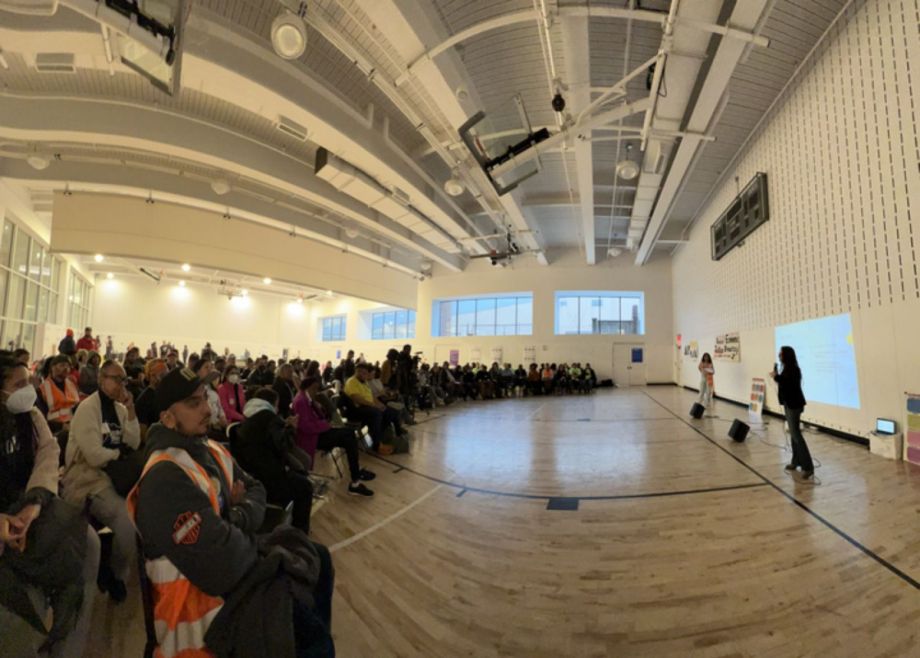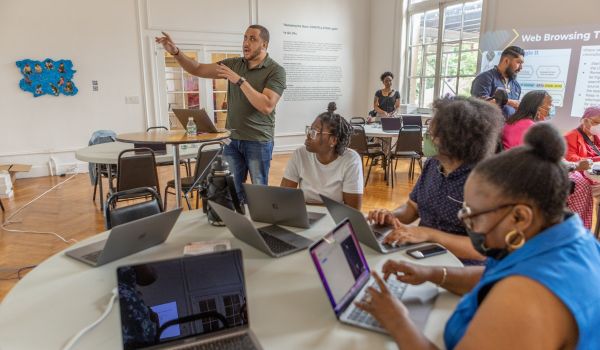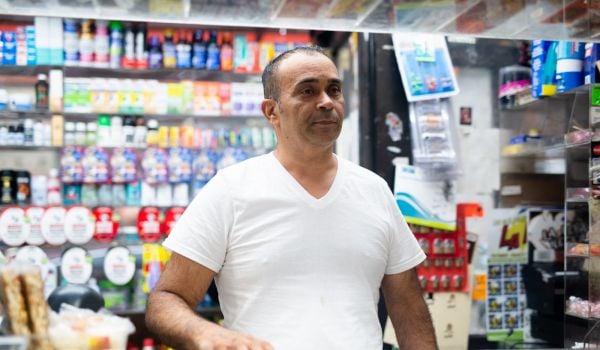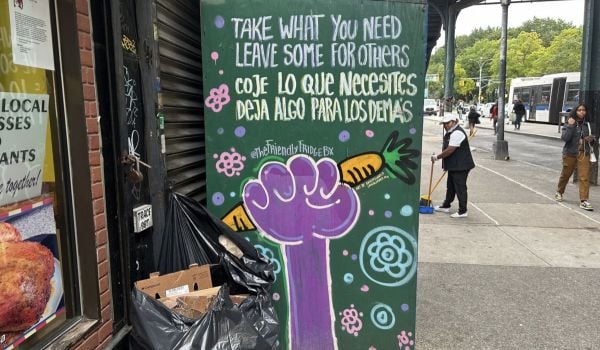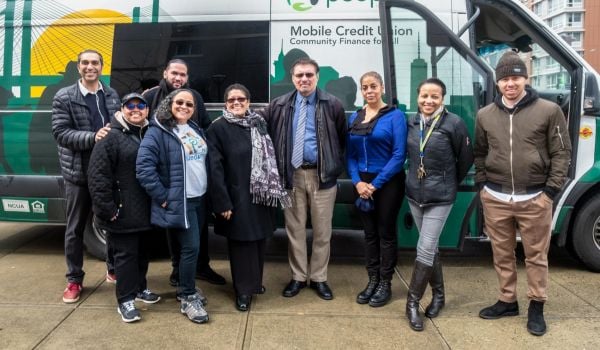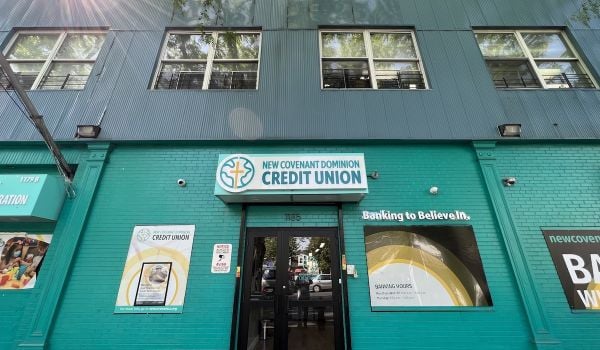Even if all goes well, backers of the Bronx Wide Plan may not get everything they want all at once. But starting next year, budget bills at all levels of government will start citing the community-developed plan. Over the next few years, local banks will start funding some of the plan’s sundry proposals or initiatives, demonstrating their compliance with the Community Reinvestment Act. Philanthropic foundations of all sizes will begin making grants and other investments directly in alignment with the plan, and they won’t be shy about seeking credit for doing so.
After three years of canvassing, workshopping, community listening and feedback sessions, the Bronx Wide Plan’s Leadership Team gathered a few hundred members in the South Bronx on April 5 to launch a public campaign in support of the plan, which is nearing its final form. The leadership team consists of about a dozen organizations from across the Bronx, including faith-based groups, organized labor and community development corporations.
“The next phase is where we’re going to all literally go to the state and go to the city and say economic democracy is what we’re looking for,” said Karla Cruz, organizer with Local 79, a construction worker union that is part of the leadership team. “We have been doing this work for the last three years and now we’re ready to take this to the streets.”
Though the Bronx has a population of 1.4 million, there is no official or unofficial comprehensive plan for the borough, nor for any of New York City’s other five boroughs, nor the city as a whole. New York is unusual in this regard; most states require local governments within their jurisdictions to have a periodically updated comprehensive or general plan as a guide for long-term infrastructure, housing and economic development. Cities of comparable population to the Bronx alone — including Philadelphia, San Antonio, Dallas, Phoenix and San Diego — all have comprehensive or general plans.
The Bronx Wide Plan incorporates more than 20 proposals or initiatives. At the meeting, they were all up for display on the walls of the basketball gym at the YMCA La Central on Westchester Avenue in the South Bronx. Event organizers invited participants to be the first to provide online feedback on the proposals using the Consider.It virtual platform.
Some proposals build on ideas already in motion. One proposal sets out a goal to expand the existing community wifi network currently operating in the Hunts Point neighborhood. The proposal for a Bronx Peoples Credit Union seeks to bring at least one new credit union branch to the borough; as Next City has previously covered, a local coalition is already using a mobile credit union van to scout out potential locations in partnership with Lower East Side Peoples Federal Credit Union. The plan would support the potential branch by having local community and labor organizations share office space with the branch, perhaps using a co-working model.
Other proposals are just in the beginning phases, like using value capture and community ownership of land to protect and support existing residents along the Cross Bronx Expressway as the city embarks on a $2 million planning process to explore the potential impact of capping the Cross Bronx.
Meanwhile the plan also proposes a shared ownership model and a cooperative hub for the Kingsbridge Armory, a massive 500,000 square-foot facility that has been vacant since 1996. After a 10-year debacle with a previous developer team, the city has been holding a new set of meetings to scope out a new vision for what to do with the massive facility. A request for proposals for redeveloping the Kingsbridge Armory is expected this summer.
“So goes the [Kingsbridge] Armory, so goes the Bronx,” said urban planner Evan Casper-Futterman, senior director for planning and education at the Bronx Cooperative Development Initiative, another organization on the Bronx Wide Plan Leadership Team.
Other proposals are just plans for now, but with significant grassroots involvement in their conception — like CannaBronx’s vision to convert “The Barge,” a floating prison facility off the coast of the Bronx, into a floating hub for cooperative cannabis enterprises including production, processing, storage and cannabis workforce training facilities.
“We want to create wealth in our community and we know one of the best ways for us to create wealth is to create worker-owned cooperatives [in the cannabis industry],” said Wanda Salaman in a previous interview with Next City. Salaman is the executive director of Mothers on the Move, also a part of the Bronx Wide Plan Leadership Team.
As the Leadership Team conveyed to meeting participants, the common thread uniting all of the proposals was “economic democracy.” Many of the proposals build on each other — one proposal to create a “community acquisition fund” would directly feed into creating community ownership of properties along a capped Cross Bronx Expressway.
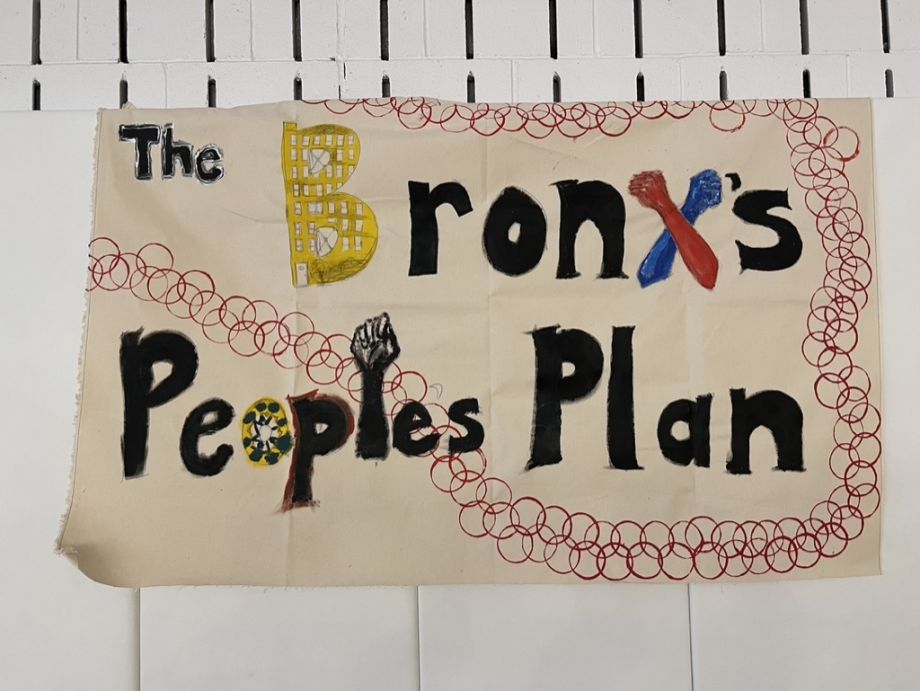
(Photo by Oscar Perry Abello)
“Simply put, [economic democracy] means we believe in shared wealth-building and shared ownership for our people here in the Bronx,” said Sandra Lobo, executive director at the Northwest Bronx Community and Clergy Coalition, another leadership team organization.
“So we think about our workplaces or housing, all of the things that are our community, we believe that we should own it together,” Lobo continued. “It shouldn’t be an outside person coming in and owning it and getting all the profit, but that we as a people in the Bronx should share in the profits and that we make the decisions together.”
Organizers spoke about the need to bring many existing battles under a common, Bronx-wide plan banner. In their view, fighting neighborhood-by-neighborhood is no longer enough. It was at one point: Back when “the Bronx was burning,” neighborhood-by-neighborhood Bronx residents started taking matters into their own hands and taking ownership of their apartment buildings as co-ops or through community development corporations like Nos Quedamos or Banana Kelly Community Improvement Association. Both are now part of the Bronx Wide Plan Leadership Team.
Today, Casper-Futterman explained to those at the meeting, real estate developers and investors see the Bronx as a single unit, approaching its current and future aspects — like a set of new commuter rail stations — as one unified “product” they can market for profit. Therefore, he argued, Bronxites also need to bring their various neighborhood-level desires and plans into a single cohesive borough-wide plan.
“If you are not planning for yourself, someone is planning for you,” Casper-Futterman said. “Even if you’re planning for yourself, someone is still planning for you.”
The true test of the plan’s grassroots resonance will be in the months ahead, as backers attempt to build a popular political base to convince elected officials it’s in their best interest to commit all to doing all they can do in alignment with the plan. Local 79 showed up with dozens of excited Bronx-resident members as a starting point for the group.
At least one elected official already appears to be supportive. Closing out the evening were remarks from Congresswoman Alexandria Ocasio-Cortez, whose district includes parts of the Bronx. She expressed her support for the plan in general and her desire to connect some of the large federal investments coming down the pike to ideas outlined in the Bronx Wide Plan.
“We’re having lots of exciting conversations about things like community land trusts, about really introducing collective and community ownership here in the South Bronx,” said Ocasio-Cortez. “And we want to take part in helping that happen.”

Oscar is Next City's senior economic justice correspondent. He previously served as Next City’s editor from 2018-2019, and was a Next City Equitable Cities Fellow from 2015-2016. Since 2011, Oscar has covered community development finance, community banking, impact investing, economic development, housing and more for media outlets such as Shelterforce, B Magazine, Impact Alpha and Fast Company.
Follow Oscar .(JavaScript must be enabled to view this email address)

